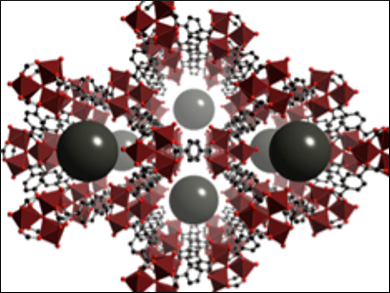Halogenated compounds are very useful in various branches of chemistry and can be further functionalized to synthesize more diverse structures. However, whilst halogenation through selective C‒H functionalization is an engaging concept, few catalysts have proved capable of realizing this challenging goal efficiently and in a selective manner.
Belén Martín-Matute and colleagues, Stockholm University and AstraZeneca, Sweden, present the development of one of the first efficient and highly selective heterogeneous procedures for C‒H activation/halogenation reactions. The reactions are catalyzed by readily synthesized recyclable Pd@MOF nanocatalysts Pd@MIL-88B-NH2(Fe), a novel and environmentally benign iron-based metal–organic framework (MOF) (MIL-88B-NH2(Fe)), and the previously developed Pd@MIL-101-NH2(Cr).
These MOFs were used to catalyze the directed halogenation of a wide range of aromatic substrates with excellent conversions achieved under very mild conditions, with full control of the selectivity between the mono- and dihalogenated products. In addition, the catalysts show high versatility and tolerate various halogen sources, directing groups, and different reaction conditions.
- Selective Heterogeneous C‒H Activation/Halogenation Reactions Catalyzed by Pd@MOF Nanocomposites,
Vlad Pascanu, Fabian Carson, Marta Vico Solano, Jie Su, Xiaodong Zou, Magnus J. Johansson, Belén Martín-Matute,
Chem. Eur. J. 2015.
DOI: 10.1002/chem.201502918
This article will be featured in Chemistry ‒ A European Journal‘s upcoming “Women in Chemistry” special issue.




